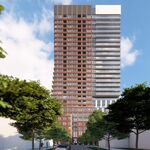ehlow
Senior Member
Does anyone know if they have started work on the stations yet in the areas where they have already tunneled or are they waiting to do that once all tunneling is done?
Only headwalls which need to be in place before the TBMs dig through. I believe that there were two contracts for east/west tunnels. The third contract which includes building the underground stations and the surface part was only recently awarded a month or two ago.
Crosstown community relations people have told me that station construction, especially at the stations that connect to the existing subway, should take most of the next 5-8 years until it opens.





